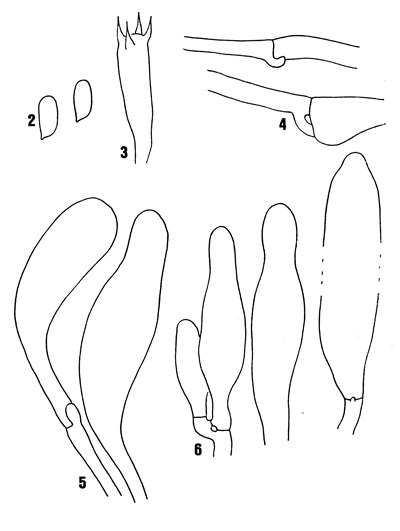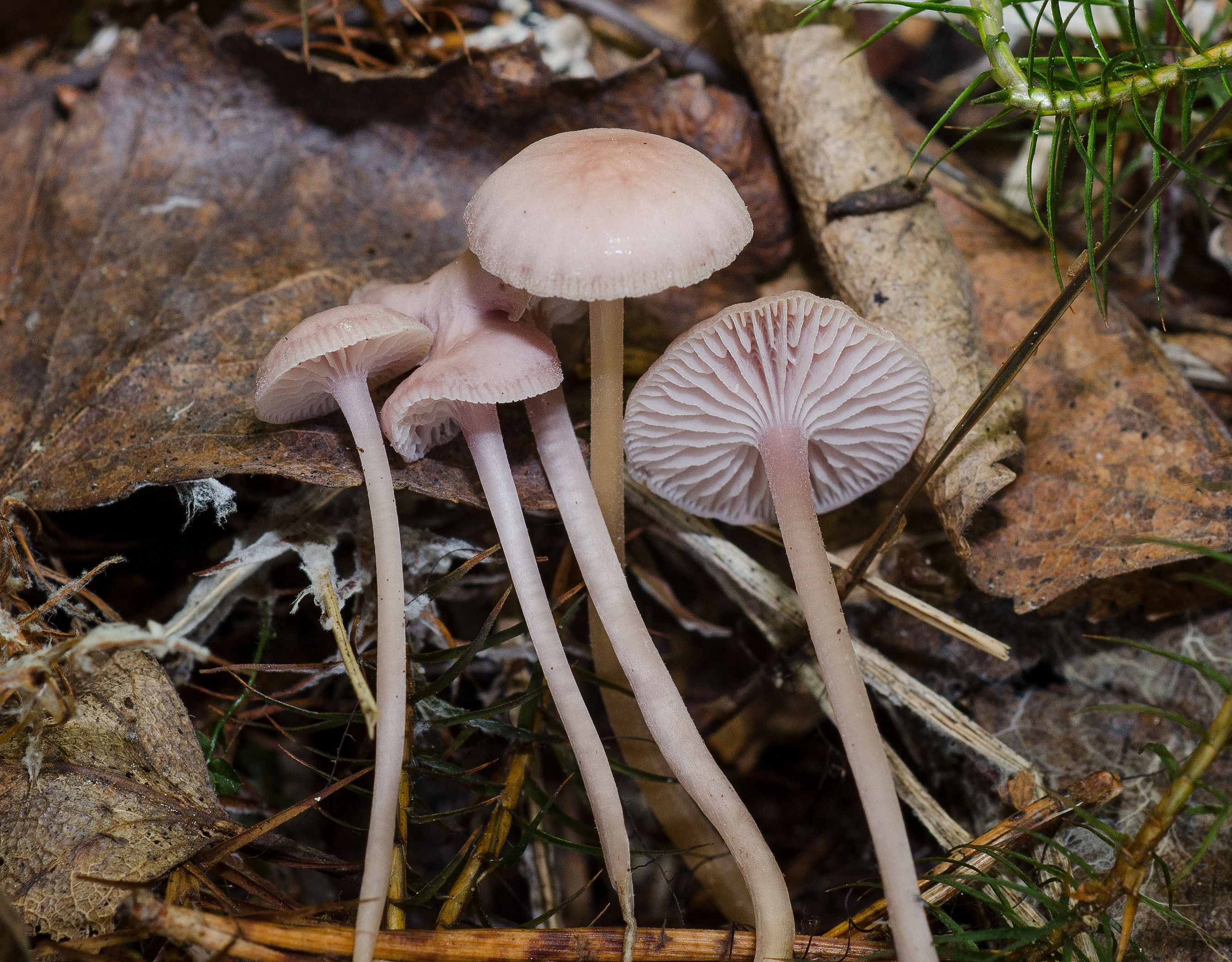Mycena kuehneriana
Description
2. Spores, 3. Basidium, 4. Hyphae of the pileipellis, 5. Caulocystidia, 6. Cheilocystidia.
Cap 10-20 mm across, campanulate to convex, flattening with age and becoming more or less depressed, translucent-striate, hygrophanous, glabrous, pale brown, more or less with a pinkish-lilaceous tinge, fading to almost white, the margin concolorous to paler. Gills 20-28 reaching the stem, arcuate to sub-horizontal, deeply decurrent, white with a pink-liac shade, concolorous or somewhat paler. Stem 20-40 x 1.5-4 mm, cylindrical, fragile, equal or somewhat widened above and below, terete to somewhat compressed, minutely puberulous above, glabrous for the greater part, concolorous with or somewhat paler than the cap, the base covered with coarse, whitish fibrils. Odour and taste raphanoid. Basidia 22-27 x 6.5-7 µm, clavate, 4-spored, with sterigmata 4.5-5.5 µm long. Spores 7.2-9.0 x 3.6-4.5 um, pip-shaped to subcylindrical, amyloid. Cheilocystidia 30-75 x 9-18 µm, forming a sterile band, fusiform, clavate, utriform or subcylindrical, smooth, apically broadly rounded or somewhat attenuated. Pleurocystidia similar. Lamellar trama dextrinoid. Hyphae of the pileipellis 3-9 µm wide, smooth. Hyphae of the cortical layer of the stem 2.7-4.5 µm wide, smooth, caulocystidia 22-70 x 5.5-14.5 µm, fusiform, clavate to cylindrical, with rounded to acute apex. Clamps present at all tissues.
Ecology and distribution
Known to grow in oak woods in the United States and Canada. In Europe very rare but recorded in both deciduous and rich Picea dominated forests. In Norway there is one record under Fagus. Autumn.

